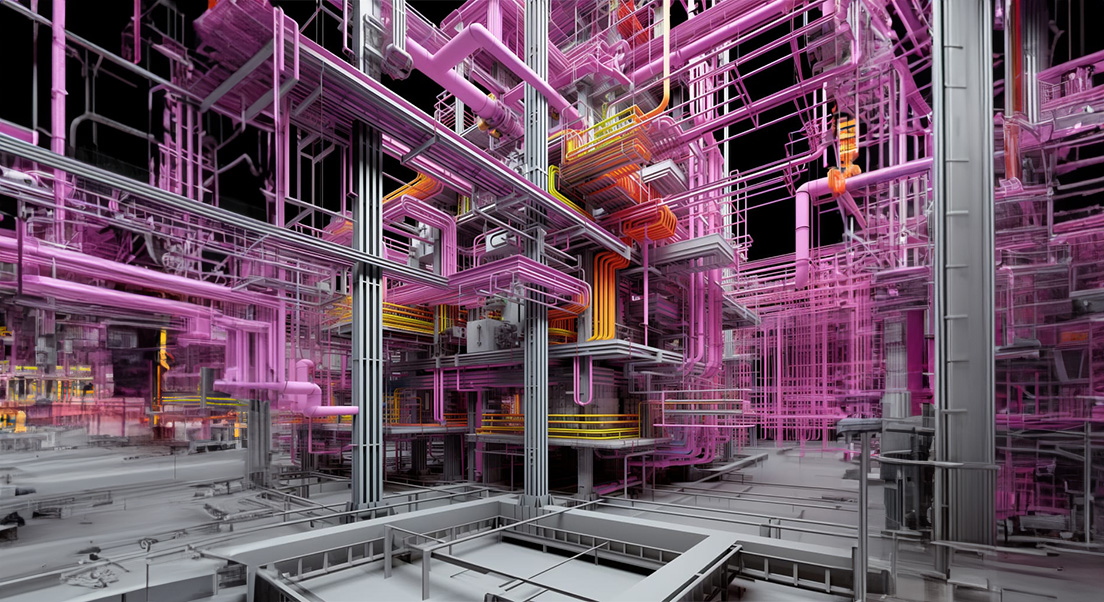GEM Engserv Pvt. Ltd is an ISO 9001:2015 certified organization, certified by TUV India in accreditation with National Accreditation Board for Certification Bodies (NABCB).
GEM Engserv Pvt. Ltd is an ISO 9001:2015 certified organization, certified by TUV India in accreditation with National Accreditation Board for Certification Bodies (NABCB).

“Do you provide BIM services? Can you create a walkthrough for our project? We want to showcase the project to the chairman next week.”
“Can you generate quantities from the model and then recheck them from the architect’s 2D design drawings?”
“Our design process is completed, and we are now looking for our vendor to generate a 3D model.”
If you thought BIM has been a much-touted buzzword in the construction industry lately, you will be surprised to know that this concept has been around for over 60 years! However, over time and through some common statements (see section above), it appears that we have a limited understanding of what it means and how it should be leveraged.
In simple terms, BIM (or Building Information Modeling) is nothing but a digital representation of a building’s physical, functional and temporal information within a model. It is a new way of creating, maintaining and transmitting information relating to a any building or other structure. BIM was born out of the need to have all information available as part of a single ecosystem and allow collaboration across various entities that play a role in construction. In a world without BIM, the collation of information and collaboration is performed by either the Design Manager or the PMO team.
Essentially, BIM provisions for the entire structure to be broken down into finite elements and allows recording data such as dimensions, materials, cost, time (and performance) about each of these elements. Seen another way, it is an approach of analysis and synthesis – breaking a complex structure down into its constituents and then visualizing the project as a sum of all these individual parts. Naturally, this approach has the largest implications on the design and planning phase which are early stages in a project.

The exact origin of Building Information Modeling is difficult to pin down to a single point and this methodology has seen an evolution in time. The 1960s and 1970s saw the use of computers in design and drafting. CAD software started being used for creating 2D drawings. A couple of decades down the line, architects and engineers started preparing data rich 3D models using parametric modeling tools. The models could store information about individual components, essentially breaking a building / structure down into a database comprised of constituent components.
While we assume that BIM as a concept was originated and propagated in “the West”, a major role was played by two programming geniuses from the Soviet Block, Gabor Bojar and Leonid Raiz. They developed the early platforms that eventually became ArchiCAD and Revit. Sprouting from the business landscape of the cold war wasn’t an easy task and their story is a testament to how much they believed in the promise of this new outlook in the architectural and engineering domain.
While most across the industry think of this only as a tool that allows for fancy walkthroughs of the building, there are several real benefits that this approach offers. Here, we have listed them across preconstruction and during construction stages. We have also assessed the time and effort saved to assign a “saving score” ($ to $$$$$) to each of these benefits.
Preconstruction
During construction
Given all that we have discussed here, it should be a no brainer to adopt this game-changing methodology in the unorganized construction industry, right? Unfortunately, this is not the case as we have discovered over the years.
In the next article, we will share specific reasons why this approach remains aspirational and has not materialized the promised savings on the ground.
Coming up in Part 2
GEM Engserv Private Ltd. , A-103, The Great Eastern Chamber, Plot No-28, Sector-11, CBD Belapur, Navi Mumbai 400614